
A digital piano is a fine piece of equipment for playing at home: it takes up less space than an acoustic piano, can be played through headphones if needed and is often much cheaper. But the large variety in models can become quite overwhelming. What distinguishes the different types of digital pianos and how do they differ to stage pianos? And when is a keyboard the better option? In this blog we give you an overview!
HOME PIANOS
Digital pianos are available in various designs, which are suitable for different applications. Most of you may have a “home piano” in mind, when it comes to digital pianos. These instruments are quite large and look like an acoustic piano. They have a fixed base made of wood and are the classic piano replacement for at home or whenever the instrument is in a fixed location. With their relatively high weight (upper end models up to over 100 kg) and their chunky “music furniture” dimensions, they are not suitable for frequent transportation. Often the models are available in different colours, for example black, rosewood or white. The three established brands are Kawai, Roland and Yamaha. In the lower price range there are other brands, such as Hemingway.
Here are some recommendations in the lower price range:
- Hemingway DP-501 MKII AT
- Thomann DP-51 B
- Yamaha YDP-163 B Arius
The piano sound of home pianos is very important: while most models offer additional sounds, such as e-pianos, harpsichord, organs and strings, these are secondary and usually not as high a quality as the piano sounds. All home pianos available today have a weighted keyboard and a hammer mechanism which simulates the feel of a grand piano. These mechanics are implemented differently, depending on the price range. The mechanics used in the high-end range, are very similar to a true grand piano action.
Here are some recommendations in the mid to high price range:
- Yamaha CLP-645 B
- Kawai CN-37 W
- Kawai CN-27 SB
Home pianos are available in various price categories. Entry-level models are priced starting around 500 euros. Mid-range prices are between 1,500 and 2,500 euros, and high-end prices stretch from approx. 2,500 euros to approximately 4,000 euros. Premium class models are about 4.500 euros and up. The most important differences are concerning the keyboard, the speaker systems and the piano sound itself: components in high end models are implemented in a much more detailed and elaborate way than in the entry level range.
Here are some recommendations in the high price / professional range:
- Kawai CA-98 R
- Yamaha CLP-675 B
- Kawai CA-78 SB
Compact digital pianos
Compact digital pianos are suitable where there isn’t enough room for a home piano, such as in some one-bedroom apartments. They are also convenient during transport. The transition to the group of stage pianos is fluid and some manufacturers even call their own compact digital pianos, stage pianos. Nevertheless, there are some differences.
With compact digital pianos, all components – keyboard, electronics and speakers – are housed in a slim, (keyboard-like) housing, which can easily be packed into a case and taken with you. Therefore, they are the ideal solution for all those who wish to play at home while occasionally taking their instrument along with them on performances or rehearsals. With a few exceptions, all compact models have a keyboard with hammer mechanics. Almost all compact digital pianos are offered with optional colour-matched wooden stands, which can be used to convert them into space-saving home pianos.
Compact digital pianos are mainly available in the lower price range by companies such as Casio, Roland and Yamaha. Here are some examples:
- Thomann DP-26
- Casio PX-160 BK Privia
- Roland FP-30 Bk
- Yamaha P-115 B
STAGE PIANOS
What are the differences between a compact digital piano and a stage piano? The transition is smooth and, using a compact digital piano on the stage, shouldn’t matter at all. Genuine stage pianos have a similar design and, as a rule, a keyboard with hammer mechanics, but are fully geared to the needs of live leys players. The most important difference: stage pianos usually do not have built-in speakers and need to be connected to an amplification system. Moreover, unlike digital pianos, they usually have a wider range of high-quality sounds and effects, so the live pianist can also cover sounds like vintage e-pianos, clavinet and strings in good quality without the need for any other instrument. Some instruments, such as the successful Nord Electro and Nord Stage series, also add a simulation of a Hammond organ to the associated effects. Many stage pianos are also equipped with some master keyboard functions, which allow them to be used on the stage to control a larger set-up with different MIDI instruments.
- Kawai MP-11 SE
- Nord Electro 5D 73
- Korg SV1 88
Keyboards
A major preference point for keyboards over digital pianos and stage pianos: when a wide range of sounds is more crucial than the piano sound. All keyboards – from entry level to professional high end – offer hundreds of sounds in all categories. To do this, keyboards usually don’t have a weighted keyboard, but a rather easy-going keyboard with 61 or 76 keys, as a compromise. For example, a keyboard should feel as light as possible for an organ sound, while a weighted keyboard would be ideal for a piano sound. Most keyboards are located somewhere in between, allowing you to play different sounds. So a keyboard’s keyboard not being weighted, like a digital piano, is therefore not a sign of poor quality. Make sure, however, that the keyboard is velocity-sensitive (which allows you to play many different volume levels from soft to loud depending on how softly or firmly you hit the key).
Low price range:
- Startone MK-300
- Yamaha PSR-E453
- Casio CTK-4400
- Casio CTK-6200
A further feature of the keyboard, is the integrated monitoring system, which provides accompanying rhythms of different styles. Although there are also some digital pianos with “auto accompaniment”, but this is usually regarded as a keyboard feature. High-end keyboards usually have the possibility to add additional rhythms, which can be purchased from manufacturers or other suppliers. In addition, many keyboards offer the possibility to play MIDI files and other functions such as effects, recorders and, if necessary, a microphone input.
Mid-range:
- Roland E-A7
- Yamaha PSR-S775
- Korg PA-600
For serious entertainers, these two models immediately come to mind: Korg pro PA-4X76 International and the Genos from Yamaha:
- Korg PA-4X76 International
- Yamaha Genos
Consultation
If you have any questions or requests for advice, then you are welcome to contact us.
Contacts for digital pianos:
Piano Gallery:
klaviere@thomann.de
Tel: 09546-9223-34
Stage Piano department / Studio / Synth / Computer:
studio@thomann.de
Tel: 09546-9223-30
Keyboards:
homekeys@thomann.de
Tel: 09546-9223-33
9 comments
Leave a Reply
You are currently viewing a placeholder content from Facebook. To access the actual content, click the button below. Please note that doing so will share data with third-party providers.
More InformationYou are currently viewing a placeholder content from Instagram. To access the actual content, click the button below. Please note that doing so will share data with third-party providers.
More InformationYou are currently viewing a placeholder content from X. To access the actual content, click the button below. Please note that doing so will share data with third-party providers.
More Information






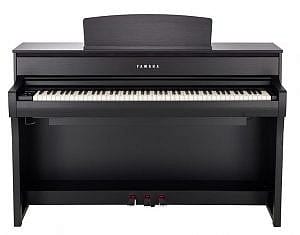
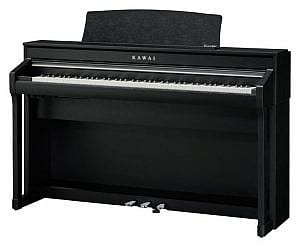

















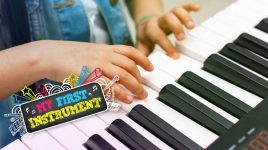

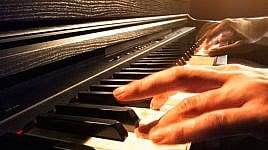
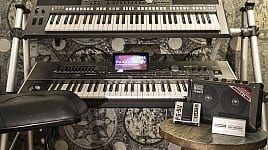

Guy says:
why do not I see the studio Numa concert in the list?
Guy says:
why do I not see the studio Numa concert in the list?
Jonas says:
Where’s the Roli Seaboard series? Kinda hard to place, I know, but it’s definitely a keyboard? Or is it? ?
Lorraine Liyanage says:
Is Thomas stocked in the UK?
Mayo says:
Not mentioning Kurzweil in any category is quite strange?
silue jonas says:
Mer ci ppour la présentation. l’ajout des prix peut être interessant.
Joli says:
Great article. Your article is kind a familiar with the one I read before. Here it is > Piano
james says:
Not mentioning Guillermo Hernandez in any category is quite strange?
proaudiostar says:
Hi! many thanks for the useful recompilation, I´d wish to share with you an honest music instruments . I hope assist you to seek out Good Music instrument
Acoustic Guitars